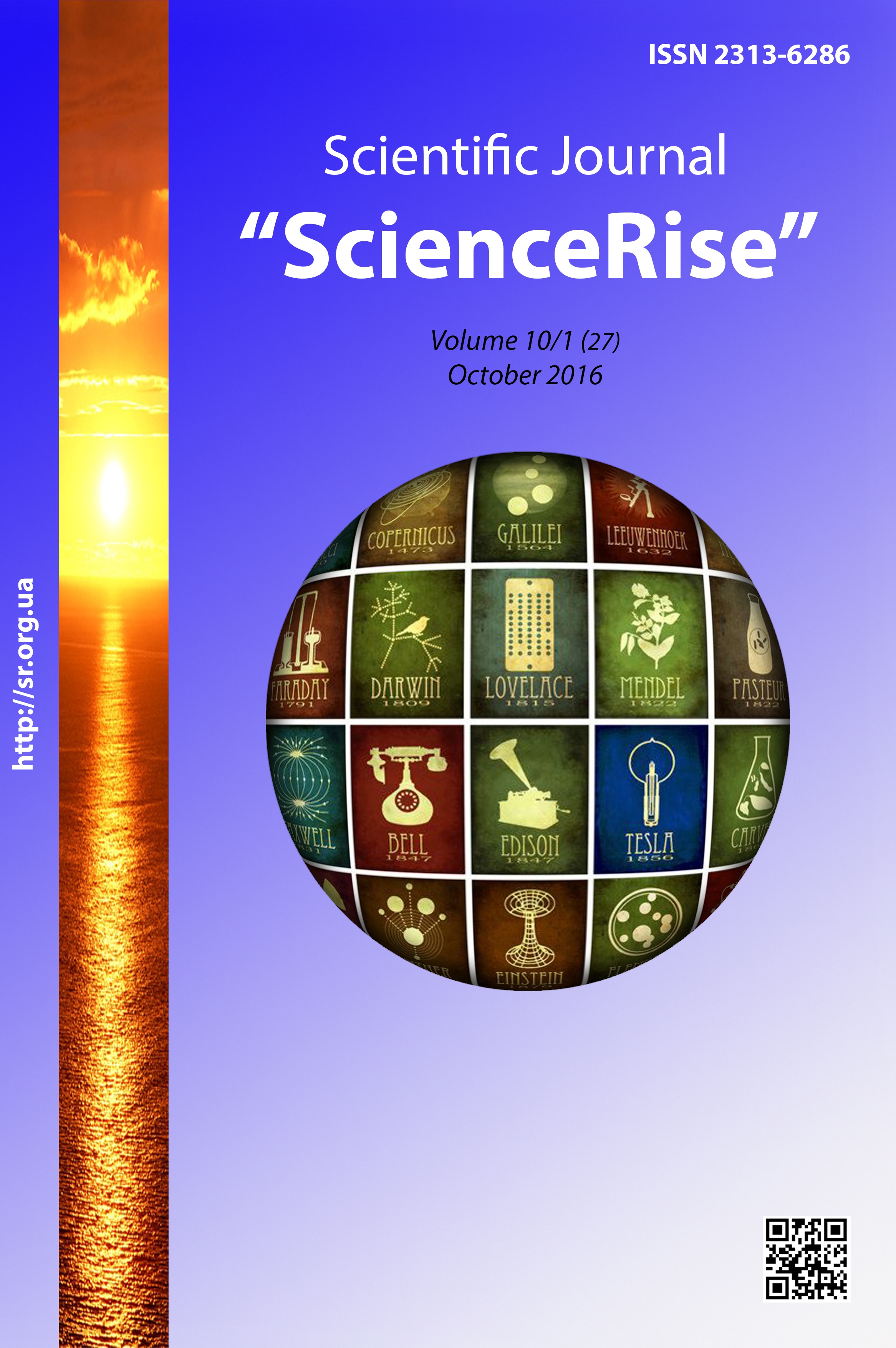Effect of biological and chemical preparations on peroxidase activity in leaves of tomato plants
DOI :
https://doi.org/10.15587/2313-8416.2016.80648Mots-clés :
tomato, peroxidase activity, biological, preparations, pesticides, Bacillus subtilis, Azotobacter chroococcumRésumé
In terms of treating tomato variety Chaika with chemical preparations with active substances if aluminum phosphate, 570 g/l + phosphorous acid 80 g/,l and mankotseb in concentration of 640 g/kg, the maximum increase in peroxidase activity in leaves of plants was observed in12 hours. In terms of use of biological preparations based on living cells Bacillus subtilis and Azotobacter chroococcum its activity was maximum in 24 hours and ranged from 77.7 to 112.7 un.mg-1•s-1
Références
The second edition of the official List of pesticides and agrochemicals permitted for use in Ukraine for 2010 (2010). Kiev: “Univest Media”, 544.
Kolomiiets, Yu. V., Hryhoriuk, I. P., Butsenko, L. M. (2015). Efficiency of influence of fungicides on activators bacterioses of tomatoes. Journal of Agricultural Science, 10, 21–24.
Murudova, S. S., Davranov, K. D. (2014). Complex microbial agents. The use of agricultural practices. Biotechnologia Acta, 7 (6), 92–101.
Serhiienko, V. H., Cherhin, O. D. (2011). Influence of biological preparations on activity of redox enzymes of tomato plants. Plant Protection and Quarantine, 57, 179–187.
Karpun, N. N., Yanushevskaya, E. B., Mikhaylova, E. V. (2015). Formation of plants nonspecific induced immunity at the biogenous stress. Agricultural biotechnology, 50 (5), 540–549. doi: 10.15389/agrobiology.2015.5.540eng
Heil, M. (2002). Induced Systemic Resistance (ISR) Against Pathogens in the Context of Induced Plant Defences. Annals of Botany, 89 (5), 503–512. doi: 10.1093/aob/mcf076
Garifzyanov, A. R., Zhukov, N. N., Ivanishchev, V. V. (2011). Formation and physiological reactios of oxygen active forms in plants cells. Modern problems of science and education, 2. Available at: http://www.science-education.ru/ru/article/view?id=4600
Dontsov, V. I., Krut'ko, V. N., Mrikaev, B. M., Ukhanov, S. V. (2006). Reactive oxygen species as a system: the value in the physiology, pathology and natural aging. Proceedings of ISA RAS, 19, 50–69.
Bhattacharjee, S. (2005). Reactive oxygen species and oxidative burst: Roles in stress, senescence and signal transduction in plants. Curr. Sci., 89, 1113–1121.
Poliksenova, V. D. (2009). Induced plant resistance to pathogens and abiotic stress factors. Bulletin BSU, 1, 48–60.
Udintsev, S. N., Burmistrova, T. I., Zabolotskaya, A. V., Zhilyakova, T. P. (2011). The mechanisms of induction of plants resistance to phytopatogens with humic substances. Bulletin of the Tomsk State University. Biology, 4 (16), 100–107.
Kolomiiets, Yu. V., Hryhoriuk, I. P., Butsenko, L. M. (2015). Application of the methods of cell selection to assess the quality and stability of tomato varieties (Lycopersicon esculentum Mill.) against the pathogens of bacterial diseases. Plant Varieties Studying and Protection, 3-4 (28-29), 33–37.
Products Catalogue of "BTU-Center" (2016). Kiev: Trading House "BTU-Center", 60.
Pochinok, Kh. N. (1976). Methods of biochemical analysis of plants. Kiev: Naukova dumka, 333.
Egorov, N. S. (2004). Fundamentals of theory of antibiotics. Moscow: Nauka, 528.
Roy, A. A., Pasichnik, L. A., Tserkovnyak, L. S., Khodos, S. F., Kurdish, I. K. (2012). Influence of bacteria of Bacillus genus on the agent of bacterial cancer of tomatoes. Microbiological journal, 74 (5), 74–80.
Téléchargements
Publié-e
Numéro
Rubrique
Licence
(c) Tous droits réservés Yulia Kolomiets, Ivan Grigoryuk, Lyudmila Butsenko 2016

Cette œuvre est sous licence Creative Commons Attribution 4.0 International.
Our journal abides by the Creative Commons CC BY copyright rights and permissions for open access journals.
Authors, who are published in this journal, agree to the following conditions:
1. The authors reserve the right to authorship of the work and pass the first publication right of this work to the journal under the terms of a Creative Commons CC BY, which allows others to freely distribute the published research with the obligatory reference to the authors of the original work and the first publication of the work in this journal.
2. The authors have the right to conclude separate supplement agreements that relate to non-exclusive work distribution in the form in which it has been published by the journal (for example, to upload the work to the online storage of the journal or publish it as part of a monograph), provided that the reference to the first publication of the work in this journal is included.

